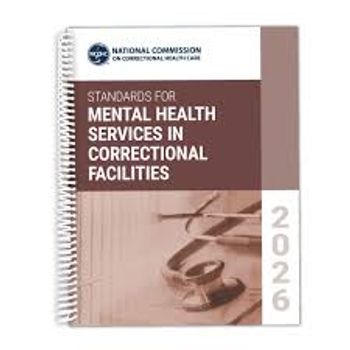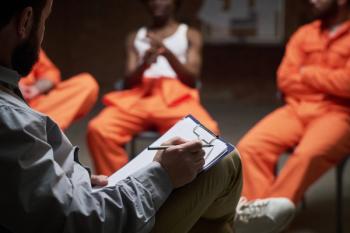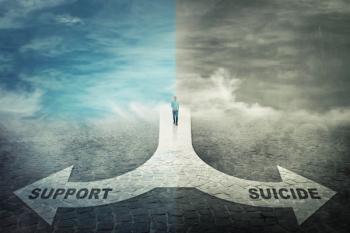
- Psychiatric Times Vol 30 No 1
- Volume 30
- Issue 1
Police Encounters With the Mentally Ill After Deinstitutionalization
Mental health professionals, state-run forensic services, and law enforcement agencies need to come together and discuss the most efficient and safe models when confronting psychiatric emergencies to improve and expand these practices across America.
The nation’s 3 largest mental health facilities are Los Angeles County Jail, Rikers Island, and Cook County Jail.1 The authors of one study estimate that using the most conservative numbers, as of 2004 the total number of persons in jails and prisons in the United States with a severe mental illness was at least 321,884. This number includes approximately 10% of jail inmates, 18% of state prison inmates, and 16% of federal prison inmates.2
More recent data from the Bureau of Justice Statistics show that the number of persons under the supervision of adult correctional authorities declined by 1.3% during 2010, reaching 7.1 million at the year’s end.3 The report notes that approximately three-quarters of the decline in the total correctional population (down 91,700) during 2010 was attributed to the decline in the number of probationers (down 69,500) during the year. However, the report does not make note of the effect of this decline on the relative number of inmates with severe mental illness compared with those without severe mental illness.
In contrast to the rising number of persons suffering from serious mental illness in our correctional systems, from 1955 to 1994, the number of psychiatric patients being treated in the nation’s public mental institutions dropped from 558,239 to 71,619.4 This drop in numbers is all the more telling when considered in comparison with the country’s increase in population from 1955 to 1994.
The closing of large state mental institutions was spurred partly by the belief that psychiatric patients would fare better if treated in the community rather than behind institutional walls. If we are to hold to this belief, then mental health professionals, policy makers, and law enforcement officers are obliged to think, and then think again, about how we can best serve the large numbers of persons suffering from serious mental illness now moving from behind hospital walls to behind bars, to open streets, and back again.
There are 2 primary areas for improvement. The first is diverting persons with mental illness away from jails and prisons, and into treatment. The second is expanding the services and treatment centers in the community.
The deinstitutionalization movement began in the late 1950s after the first antipsychotic medication was introduced. This psychiatric advancement, among other complex fiscal and legal factors, resulted in an exodus of psychiatric patients into the streets and communities of America, which, in turn, caused law enforcement to have a much greater interaction with persons who had a serious mental illness. A report by the Treatment Advocacy Center and National Sheriffs’ Association states that in 2004 there was approximately one psychiatric bed available for every 3000 persons in the United States, in contrast to 1955, when there was one psychiatric bed available for every 300 persons.5
The increased number of persons suffering from serious mental illness in the community today sharpens our focus on the rights of persons to not be held against their will in mental institutions without clear and convincing evidence to justify civil commitment. We have also learned from experience that the potential pitfalls of attempting to treat persons suffering from serious mental illness in the community includes the risk that many of them fall out of treatment, and the current system is too strained to accommodate the large numbers of people that need treatment. These factors, in turn, lead to an increased burden on the police who are called to respond to psychiatric emergencies in the community, which could be better resolved with adequate psychiatric care instead of incarceration.
An ever-increasing number of persons who have a serious mental illness are being treated in jails and prisons. To successfully achieve diversion, we should provide more training in mental health to first responders. We should employ more mental health professionals to work with the police and other first responders. These efforts would be a cost-effective way to divert persons suffering from serious mental illness from correctional systems into treatment.
Police officers should receive proper training, education, and services to interact with persons suffering from serious mental illness in a safe manner. A report by the US Department of Justice noted inconsistent research findings on the use of force by police when dealing with persons who have a mental illness. The authors of this report call on further research to investigate how training police can reduce use of force on persons who have a serious mental illness.6
What are the best law enforcement models for encountering a psychiatric emergency? Models include police officers with specialized training in mental health as first responders to a psychiatric emergency, civilian mental health professionals employed by police, and mobile community-based mental health teams that respond to police calls but are not employed by police.7
Dr Linda Teplin8 points out that police officers have 3 choices when they encounter a person who has a mental illness who is creating a disturbance: transport the person to a hospital, arrest the person, or attempt to resolve the crisis on the street. Police officers often serve as the gatekeepers who ensure that persons with serious mental illness receive treatment and are not simply punished for having a mental illness by being sent to the correctional system.
If we are to entrust police officers with the responsibility of making the correct decision about the need for transport to a treatment center versus no treatment, we must provide the proper services and training to make the process efficient and safe, for both the officers and the persons with the serious mental illness. Mental health professionals, state-run forensic services, and law enforcement agencies need to come together and discuss the most efficient and safe models when confronting psychiatric emergencies to improve and expand these practices across America.
References:
References
1. National Public Radio. Nation’s Jails Struggle With Mentally Ill Prisoners. September 4, 2011. http://www.npr.org/2011/09/04/140167676/nations-jails-struggle-with-mentally-ill-prisoners. Accessed December 12, 2012.
2. Lamb HR, Weinberger LE, Marsh JS, Gross BH. Treatment prospects for persons with severe mental illness in an urban county jail. Psychiatr Serv. 2007;58:782-786.
3. Glaze LE. Correctional populations in the United States, 2010. December 2011. http://bjs.ojp.usdoj.gov/content/pub/pdf/cpus10.pdf. Accessed December 12, 2012.
4. Deinstitutionalization: a psychiatric “Titanic.” 1997. http://www.pbs.org/wgbh/pages/frontline/shows/asylums/special/excerpt.html. Accessed December 12, 2012.
5. Torrey EF, Kennard AD, Eslinger D, et al. More mentally ill persons are in jails and prisons than hospitals: a survey of the states. May 2010. http://www.treatmentadvocacycenter.org/storage/documents/final_jails_v_hospitals_study.pdf. Accessed December 12, 2012.
6. Adams K, Alpert GP, Dunham RG, et al. Use of force by police: overview of national and local data. October 1999. https://www.ncjrs.gov/pdffiles1/nij/176330-1.pdf. Accessed December 12, 2012.
7. Steadman HJ, Deane MW, Borum R, Morrissey JP. Comparing outcomes of major models of police responses to mental health emergencies. Psychiatr Serv. 2000;51:645-649.
8. Teplin LA. Keeping the peace: police discretion and mentally ill persons. Natl Inst Justice J. 2000;7:8-15. https://www.ncjrs.gov/pdffiles1/jr000244c.pdf. Accessed December 14, 2012.
Articles in this issue
almost 13 years ago
Update on Adolescent Mood Disordersalmost 13 years ago
Planck's Law of Generationsalmost 13 years ago
The Older Psychiatrist in an Era of "Unprecedented Change"almost 13 years ago
The Trees of New Jerseyalmost 13 years ago
Intimate Portrait: Terry Smolar, PhDalmost 13 years ago
Comorbidity In Psychiatric Disorders: A Literature Reviewalmost 13 years ago
Treatment Implications for Comorbid Diabetes Mellitus and Depressionalmost 13 years ago
Comorbid Movement and Psychiatric Disordersalmost 13 years ago
Ketamine, Cum Grano SalisNewsletter
Receive trusted psychiatric news, expert analysis, and clinical insights — subscribe today to support your practice and your patients.













